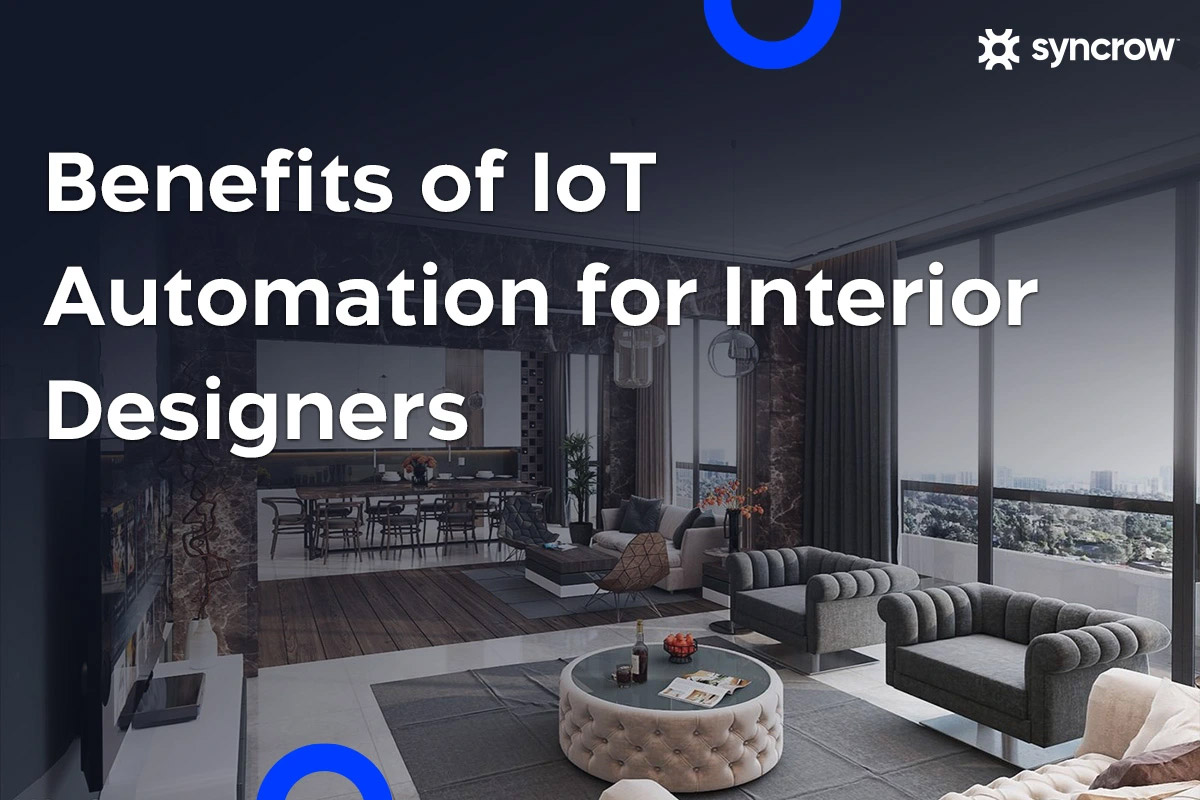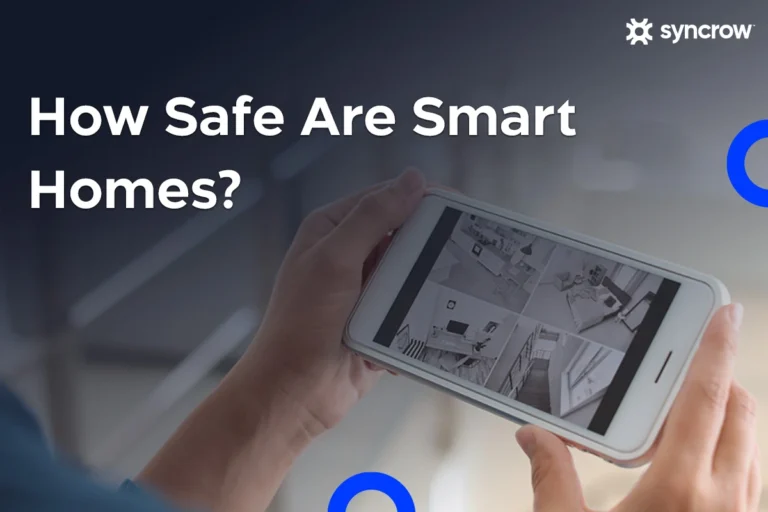Smart technology is reshaping industries around the world, and interior design is no exception. In Dubai, luxury living meets innovation, creating a global benchmark for modern design.
In this article, we’ll show why smart IoT technology is no longer a luxury but a necessity. These solutions make spaces more functional, efficient, and in tune with today’s digital lifestyle. We’ll also look at how they meet (and often exceed) the high expectations of today’s clients, setting new standards for comfort and convenience.
The Rising Demand for Smart Homes
Interior design is no longer just about looks but also about function and comfort. Smart IoT technology drives this shift, giving designers tools that fit naturally into decor while adding powerful features. For example, modern lighting systems do more than brighten a room. They can shift colors throughout the day to boost mood and match the style of the space. Smart thermostats and curtains adjust on their own to keep a balance of comfort and energy savings.
Subtle integration is key. Climate control systems now learn from residents’ routines, adjusting settings automatically. Security blends into the design with biometric locks and discreet cameras, adding safety without disrupting style. Voice-activated appliances and entertainment systems add both luxury and convenience, all tied into a central home app.
These innovations are already shaping high-profile projects in Dubai. In many luxury apartments, everything from lights to security is managed through sleek touch panels or a mobile app. Environmental sensors take it a step further. They automatically filter air during a sandstorm or shut off water during a leak. These features not only make daily life easier but also increase the value and appeal of the property, proving that smart technology is now essential in modern interior design.
Enhancing Client Experiences with Smart Interiors
As the housing market grows, so do the expectations of buyers, especially in high-end places like Dubai. Today’s clients want homes that match their style and include the latest technology to make daily life easier. Interior designers are now expected to deliver solutions that not only look beautiful but also meet the needs of the people living in them.
Meeting and Exceeding Expectations
Designers who use IoT have a chance to go beyond traditional design. Smart home technology lets them create spaces that adapt to each client’s lifestyle. Lighting, heating, and other features can be personalized and controlled through apps or voice commands. This is less about luxury and more about building responsive homes that boost convenience and peace of mind.
Marketability and Value
Investing in smart technology makes properties easier to sell. For interior designers, suggesting these upgrades helps clients protect their investment and raise the future resale value of their homes. Features like energy-efficient lighting, smart thermostats, and automated systems often stand out in property listings. Buyers increasingly look for homes that combine sustainability with technology. For both developers and homeowners, this can lead to faster sales and higher prices, showing the clear financial value of adding smart technology to interior design projects.

Sustainability Through Smart Design
Smart technology plays a key role in promoting sustainability within the field of interior design. These technologies help reduce a building’s carbon footprint by optimizing energy use and automating essential functions such as heating, cooling, and lighting. Interior designers have a unique opportunity to contribute to the construction of green buildings by selecting IoT-enabled fixtures and systems that not only enhance the functionality of a space, but also its environmental performance.
The benefits of integrating smart technologies extend beyond environmental responsibility. They also provide economic and health benefits by improving air quality, reducing energy costs, and maintaining better indoor environmental quality. For example, IoT-enabled HVAC systems can detect and adjust settings based on room occupancy and air quality levels, significantly improving energy efficiency while ensuring optimal comfort for residents. These systems are also scalable, meaning the interventions can start out small if the price point is an issue, while still providing the client with a taste of luxury living.
Incorporating smart technologies into interior design doesn’t just meet current sustainability standards – it sets the stage for future advancements. As regulations become stricter and green certifications gain more prominence, properties equipped with smart technologies will emerge ahead of the curve. These features not only comply with current standards but are also adaptable to future upgrades, ensuring that properties remain at the cutting edge of sustainability and technology. This foresight in design not only enhances the longevity of the property’s appeal but also its viability in a rapidly evolving real estate market.
The Future of Interior Design with IoT Technologies
As IoT technology becomes more common, interior design is moving toward spaces that are both connected and responsive. The goal is not only to look good but also to adapt to the needs of the people living in them. For example, tools like augmented reality help with space planning, while IoT-enabled furniture can adjust to user preferences, adding both comfort and function.
Adaptability and Innovation
Adaptability is what makes IoT so powerful in design. Smart systems react in real time to changes in light, temperature, or even who is in the room. Modular IoT setups can be expanded or updated easily, helping designers keep projects future-ready without costly renovations. In a fast-moving market, this flexibility gives designers an edge and ensures their work stays relevant.
Future-Proofing through Technology
As smart technology becomes more affordable, features once reserved for luxury homes are reaching a wider audience. More people can now enjoy personalized, intelligent environments that improve daily life. Interior designers are encouraged to adopt these tools, using them to turn ordinary spaces into interactive, adaptable homes. By doing so, they deliver greater value to clients, creating designs that meet today’s needs and stay ready for future innovations.
The Ultimate Design Enhancer
Today, demand for personalized living spaces is higher than ever, and IoT technology makes this possible. By using data and user input, designers can create homes that match each client’s style and needs. This ranges from comfort settings that adjust automatically to lighting or décor that shifts with the user’s mood or occasion. Personalization is no longer just a convenience; it creates a stronger connection between people and their spaces.
This push for personalization is also changing the use of materials and architecture. For example, smart materials can react to outside conditions, improving insulation, lighting, or even sound quality. When combined with IoT devices, these materials open the door to design solutions that once seemed impossible.
As more people look for personalized and intelligent interiors, the market continues to evolve. Companies compete to build new technologies, driving constant innovation in design, materials, and smart systems. This cycle keeps interior design fresh, competitive, and ready for the future.
IoT for Visionary Interior Designers
The integration of IoT technology is revolutionizing how interior spaces are designed, offering environments that are not only visually appealing but also highly responsive to user needs. This advancement offers interior designers the opportunity to push beyond traditional boundaries, creating spaces that adapt dynamically, ensuring comfort, efficiency, and sustainability are seamlessly integrated.
Looking forward, the role of smart technology in enhancing interior functionality continues to expand, providing environments that can evolve to accommodate future technological advancements and changing occupant needs. These intelligent spaces support sustainable living and offer a dynamic approach to modern interiors that are as practical as they are inspiring.
For interior designers ready to explore the potential of this dynamic field, partnering with technology leaders like Syncrow presents a unique opportunity to be at the forefront of smart and innovative interior design. We invite you to discover how our cutting-edge solutions can enhance your projects, providing you the tools to create forward-thinking designs that resonate with contemporary lifestyles. Let’s build the beautiful, functional, and sustainable spaces of the future – contact Syncrow to get started.




